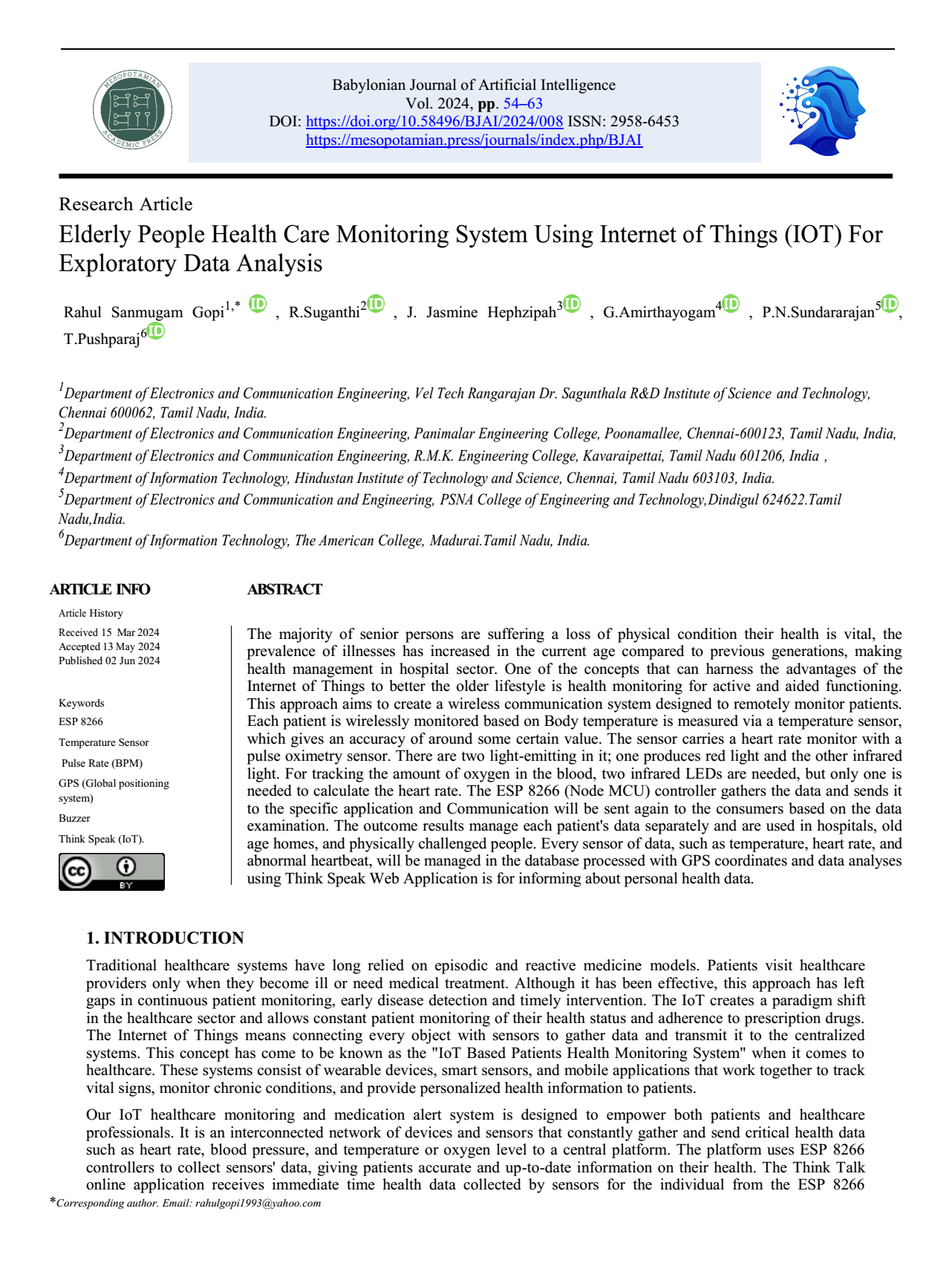Elderly People Health Care Monitoring System Using Internet of Things (IOT) For Exploratory Data Analysis
Main Article Content
Abstract
The majority of senior persons are suffering a loss of physical condition their health is vital, the prevalence of illnesses has increased in the current age compared to previous generations, making health management in hospital sector. One of the concepts that can harness the advantages of the Internet of Things to better the older lifestyle is health monitoring for active and aided functioning. This approach aims to create a wireless communication system designed to remotely monitor patients. Each patient is wirelessly monitored based on Body temperature is measured via a temperature sensor, which gives an accuracy of around some certain value. The sensor carries a heart rate monitor with a pulse oximetry sensor. There are two light-emitting in it; one produces red light and the other infrared light. For tracking the amount of oxygen in the blood, two infrared LEDs are needed, but only one is needed to calculate the heart rate. The ESP 8266 (Node MCU) controller gathers the data and sends it to the specific application and Communication will be sent again to the consumers based on the data examination. The outcome results manage each patient's data separately and are used in hospitals, old age homes, and physically challenged people. Every sensor of data, such as temperature, heart rate, and abnormal heartbeat, will be managed in the database processed with GPS coordinates and data analyses using Think Speak Web Application is for informing about personal health data.
